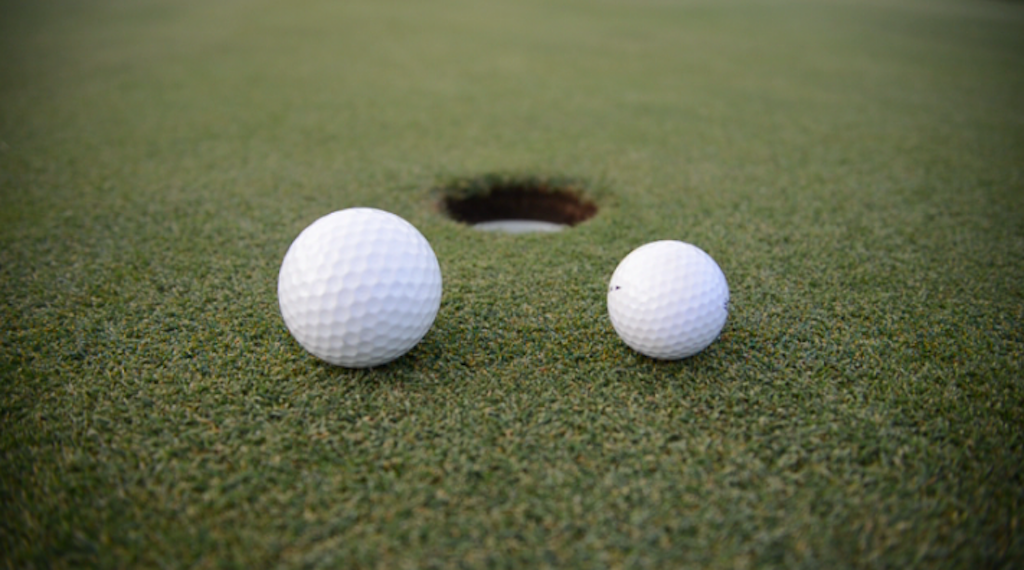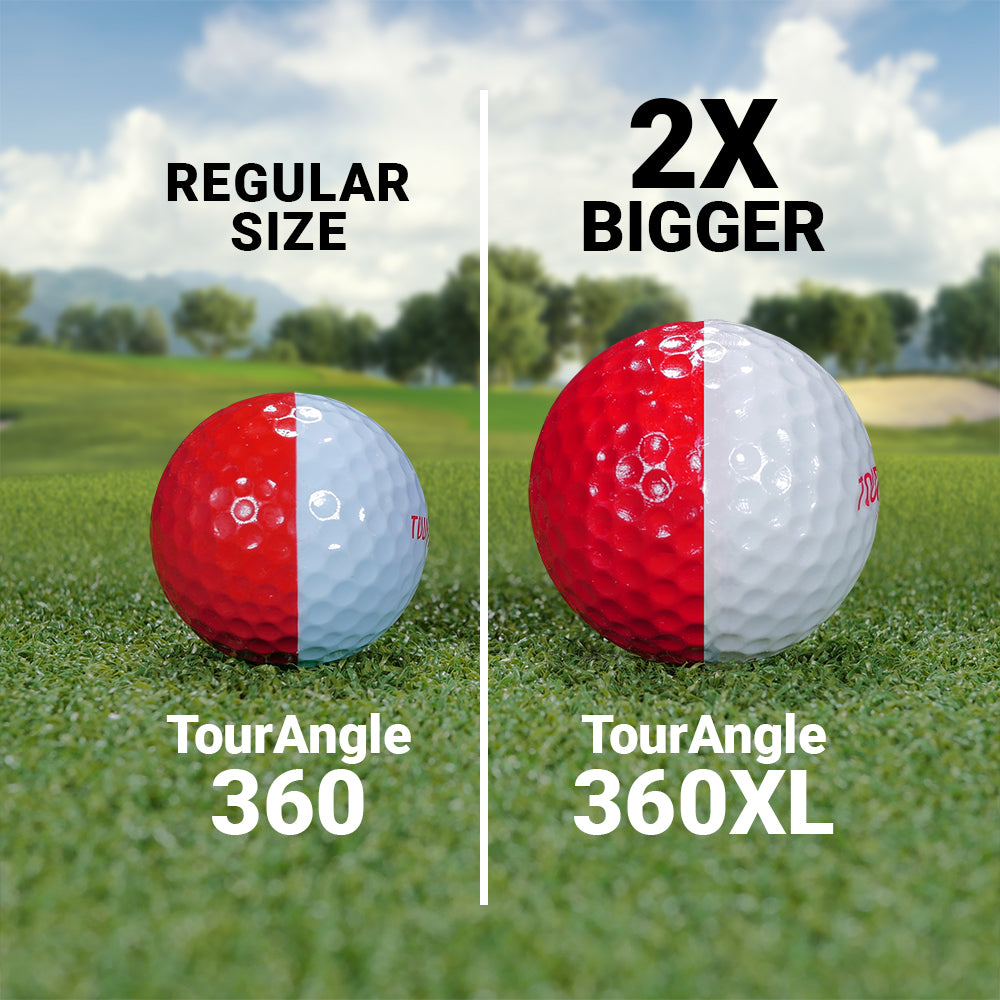Golf balls have a diameter of at least 1.68 inches. Their weight should not exceed 1.62 ounces.
Golf is a sport of precision, and the size of the golf ball plays a crucial role. Standard golf balls measure at least 1. 68 inches in diameter, ensuring consistency in play. The weight of the ball, not more than 1.
62 ounces, also contributes to its performance. These specifications are set by the United States Golf Association (USGA) and The R&A, ensuring uniformity worldwide. Knowing these dimensions helps golfers choose the right equipment. Whether you’re a professional or a beginner, understanding the size and weight of golf balls can enhance your game. Choose the correct ball to improve accuracy and distance.

Credit: golf.com
Golf Ball Dimensions
Golf balls may seem small, but their dimensions are crucial. Understanding these measurements helps players choose the right ball. Let’s explore the specifics of golf ball dimensions.
Diameter
The diameter of a golf ball is standardized. According to the rules, a golf ball must have a minimum diameter of 1.68 inches (42.67 mm). This ensures fairness in the game.
Circumference
The circumference of a golf ball is linked to its diameter. Using the formula C = π D, we can calculate it. With a diameter of 1.68 inches, the circumference is approximately 5.28 inches (134.05 mm).
| Measurement | Value (inches) | Value (mm) |
|---|---|---|
| Diameter | 1.68 | 42.67 |
| Circumference | 5.28 | 134.05 |
Knowing these dimensions can help golfers improve their game. It ensures they are playing with regulation-sized balls.
Weight Standards
The weight of a golf ball is crucial. It affects the performance and play. The governing bodies set strict weight standards. This ensures fairness and consistency in the game.
Maximum Weight
According to the United States Golf Association (USGA), the maximum weight for a golf ball is 1.620 ounces (45.93 grams). This standard helps maintain uniformity. Golf balls heavier than this limit are not allowed in official tournaments. The Royal and Ancient Golf Club (R&A) also follows this rule.
| Golf Association | Maximum Weight (ounces) | Maximum Weight (grams) |
|---|---|---|
| USGA | 1.620 | 45.93 |
| RA | 1.620 | 45.93 |
Impact On Play
The weight of a golf ball impacts its flight and distance. Heavier balls may travel shorter distances. Lighter balls can travel further but are more affected by wind. The weight also affects the feel and control. Golfers prefer balls that provide the right balance of distance and control.
Here are some impacts of golf ball weight:
- Heavier Balls: More control, less distance.
- Lighter Balls: More distance, less control.
- Balanced Weight: Optimal performance and feel.
Material Composition
Golf balls are not just simple spheres. They have complex materials inside. Each part affects how the ball performs. Let’s dive into the key materials that make up a golf ball.
Core Materials
The core is the heart of the golf ball. It mainly determines the ball’s distance and feel. Most golf balls have a rubber core.
Rubber cores can be soft or hard. A soft core gives more control. A hard core makes the ball go farther.
Some advanced golf balls have dual cores. These have two layers inside. Dual cores balance distance and control well.
Cover Materials
The cover is the outer layer of the golf ball. It protects the core and affects spin and durability. Golf ball covers are usually made from Urethane or Surlyn.
Urethane covers offer more spin and feel. They are softer but can wear out faster.
Surlyn covers are more durable. They are harder and less expensive.
Some golf balls have a blend of these materials. This mix aims to offer the best of both worlds.
Manufacturing Process
The manufacturing process of golf balls is precise and intricate. Each step ensures the golf ball performs exceptionally on the course. Let’s delve into the key aspects of this process.
Core Construction
The core is the heart of the golf ball. It determines the ball’s distance and feel. Manufacturers use different materials for the core. Common materials include rubber and synthetic polymers.
The core is often a single solid piece. Some advanced golf balls have a multi-layer core. These layers enhance performance. Each layer has specific properties. For instance:
- Inner Core: Provides distance.
- Outer Core: Offers control and spin.
The core starts as a rubber slab. It is heated and molded into a sphere. This process ensures uniformity and consistency.
Dimple Design
Dimples on a golf ball are crucial for its flight. They reduce drag and increase lift. This helps the ball travel farther and straighter. The number of dimples varies. Most golf balls have between 300 and 500 dimples.
The dimples’ design and pattern are vital. Manufacturers use computer simulations to perfect them. Different patterns affect the ball’s aerodynamics. For example:
- Hexagonal dimples: Provide stability.
- Circular dimples: Enhance distance.
Dimples are created during the molding process. The core is placed in a mold. Liquid plastic is injected around the core. Once cooled, the dimples form a part of the outer shell.
Every detail in the manufacturing process impacts the golf ball’s performance. From the core construction to the dimple design, precision is key.
Regulations And Standards
Golf balls must meet specific regulations and standards. These rules ensure fairness in the game. Both the USGA and R&A set these standards. Understanding these rules helps players choose the right golf ball.
Usga Guidelines
The USGA or United States Golf Association sets clear guidelines. The diameter of a golf ball must be at least 1.68 inches. The weight should not exceed 1.62 ounces. These measurements ensure consistency and fairness.
| Measurement | Standard |
|---|---|
| Diameter | At least 1.68 inches |
| Weight | Not more than 1.62 ounces |
R&a Rules
The RA or Royal and Ancient Golf Club also has rules. These rules are similar to USGA guidelines. The golf ball must have a minimum diameter of 1.68 inches. The weight should not go beyond 1.62 ounces. These standards maintain the integrity of the game globally.
- Diameter: Minimum 1.68 inches
- Weight: Maximum 1.62 ounces

Credit: www.golfwrx.com
Performance Factors
Understanding the performance factors of golf balls can help improve your game. The size and design of a golf ball impact its distance and control.
Distance
The size of a golf ball affects the distance it can travel. Larger balls often have more air resistance. This can reduce the total distance. Smaller balls, within legal limits, may travel further. They cut through the air more easily.
Golf ball manufacturers design balls for maximum distance. They use materials that enhance the ball’s flight. Dimples on the ball’s surface also play a role. They reduce drag and increase lift.
Control
Control is crucial for accuracy in golf. The size of the ball can impact this as well. Larger balls are easier to control for some players. They offer more surface area for the club to make contact. Smaller balls may offer less control but more speed.
Materials and construction also affect control. Softer balls provide better feel and precision. Harder balls can be more difficult to control but may offer greater distance. Professional players often choose balls that balance distance and control.
Choosing The Right Ball
Choosing the right golf ball is crucial for improving your game. It depends on various factors such as skill level and playing conditions. Understanding these factors helps in making an informed decision.
Skill Level
Your skill level greatly influences the type of golf ball you should use. Beginners benefit from balls designed for greater distance and forgiveness. Advanced players prefer balls that offer better control and spin.
- Beginners: Opt for two-piece balls. They provide durability and distance.
- Intermediate Players: Use three-piece balls. They offer a balance of control and distance.
- Advanced Players: Choose multi-layer balls. They provide maximum control and spin.
Playing Conditions
The playing conditions also affect your choice of golf ball. Different weather and course conditions require different types of balls.
| Condition | Recommended Ball Type |
|---|---|
| Windy | Low-compression balls for better control |
| Wet | High-visibility balls to track easily |
| Dry | High-spin balls for better stopping power |
Consider both skill level and playing conditions to choose the right ball. The right ball can make a significant difference in your performance.
Care And Maintenance
Proper care and maintenance of golf balls help them last longer. Keeping them in good condition ensures better performance on the course. Follow these simple tips to extend the life of your golf balls.
Cleaning Tips
Clean your golf balls after each game. Dirt and grass can affect their performance. Use a soft cloth and mild soap to clean them. Avoid harsh chemicals as they may damage the surface.
- Fill a bucket with warm water and soap.
- Soak the golf balls for a few minutes.
- Gently scrub with a soft brush or cloth.
- Rinse with clean water and dry with a towel.
Storage Advice
Store your golf balls properly to maintain their quality. Avoid extreme temperatures and direct sunlight. Keep them in a cool, dry place. Use a container with a lid to protect them from dust and moisture.
- Store golf balls in a cool, dry area.
- Avoid leaving them in your car.
- Keep them away from direct sunlight.
- Use a container with a lid.

Credit: www.tourangle.com
Frequently Asked Questions
What Is Golf Ball Diameter?
The standard golf ball diameter is 1. 68 inches (42. 67 mm). This size is regulated by the USGA and R&A.
What Is The Circumference Of A Golf Ball?
The circumference of a standard golf ball is approximately 5. 28 inches or 13. 37 centimeters. Golf balls must meet this regulation.
How Many Golf Balls Wide Is A Hole?
A golf hole is about 4. 25 inches wide. It can fit approximately 3 golf balls side by side.
What Is The Radius Of The Golf Ball?
The radius of a standard golf ball is about 21. 35 millimeters. This size ensures consistent performance and playability.
Conclusion
Golf balls are typically 1. 68 inches in diameter. This standard size ensures fair play across all courses. Understanding the dimensions of golf balls can enhance your game. Keep these details in mind next time you hit the greens. For more insights, stay tuned to our blog.
Happy golfing!




